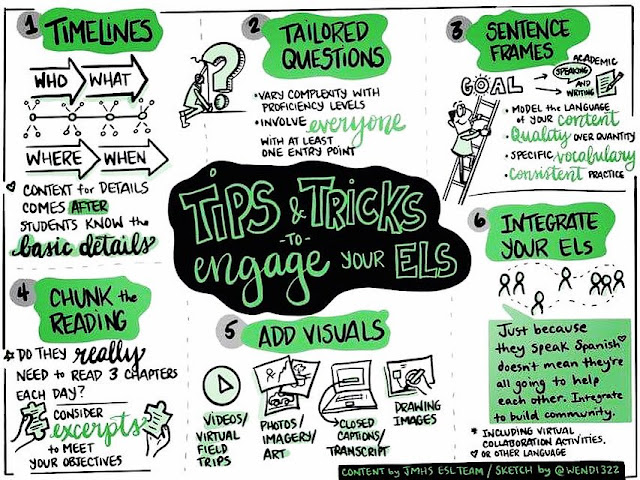Teaching English to English Language Learners
Teaching English to English Language Learners
This year, MCPS has implemented a new co-teaching model for ELLs (English Language Learners), or students in ESOL classes (English for Speakers of Other Languages). Previously, all ESOL students at the middle school level were enrolled in a sheltered ESOL class until they exited the program. It was then a decision at each individual school whether higher level ESOL students would also take an English class in addition to ESOL. However, it was noticed that many ESOL students were not prepared for high school level English classes if they were not enrolled in a middle school level English class for at least two of their three middle school years. So, MCPS made a change. Now, all level 3 and 4 ESOL students in grades 7 and 8 are enrolled in a co-taught English class with both an English teacher and ESOL teacher. These classes follow the same English curriculum as non-inclusion English classes and co-taught special education English classes. At many schools, this means both the curriculum and the texts are advanced.
Though I have taught special education inclusion classes before, teaching ESOL inclusion classes are a whole different game. These students need many extra supports to be able to access the advanced curriculum materials and texts that the county expects us to teach to all our students. We need to make sure that our instruction is rigorous enough to help our ESOL students pass the ACCESS (Assessing Comprehension and Communication in English State-to-State) test. This includes more academic speaking and listening than is usually required in our regular English curriculum. It has been challenging to find the right balance between rigorous instruction and providing enough supports so that our ESOL students can access the materials.
As the "lead teacher" in my ESOL inclusion classes, I look to my ESOL teacher a lot to help provide the accurate supports for our students. However, as the Content Specialist for the English, ESOL, and Reading department, it is my job to be able to support my ESOL teachers with this knowledge. In browsing Twitter, I found the following infographic:
1. Timelines
Timelines and summaries are an excellent way to provide ELLs an access point to the grade level texts they are expected to read in English class. Once they have the broad overview of the basic details of the story or article, they will be more likely to understand the context for those details. It is important for higher level ESOL students that these timelines and summaries are provided in English and not in their home language so that they are still practicing their English language skills, even through the supports you are providing for them.
2. Tailored Questions
The questions that you ask your students to answer should be tailored to their WIDA can-do descriptors. Asking ELLs to respond to questions way above their can-do levels will leave students confused, even if/when they do understand the text they are reading. It is okay to adjust the wording of the question and adjust the expectations for student responses, as long as the overall goal still matches that of the original curriculum.
3. Sentence Frames
This is the area that most teachers are the most comfortable with. We regularly provide "optional" sentence frames to all of our students, then fade away those supports as the year progresses. ESOL students, however, still need these frames regularly because they are still learning how the English language works, especially in writing. ELLs also benefit not just from sentence frames, but paragraph frames in extended writing scenarios. These frames help students practice writing at the expected level, but take away the burden of figuring out all the advanced ins and outs of the language in the process.
4. Chunk the Reading
Allowing students to read excerpts instead of entire texts call also lessen the burden because it takes our ESOL students longer to read than native English speakers. Lessening the amount of reading can make reading tasks feel manageable and boost student confidence. Another strategy is to highlight the portions of the texts that students will find most useful when completing the connected writing prompt. That way, even if students do not finish the reading, or get lost in the complexity of the text, they are still able to quickly identify the area of the text to use for textual evidence in response to a writing prompt.
5. Add Visuals
Pictures and videos are a great tool to use to both appeal to your students' interests and help them access the content of the class. Students often feel overwhelmed by the amount of material that teachers ask them to read, and prefer audio or video content to help lighten the load. Adding these visual tools to your lessons can help students feel more confident in their abilities to understand the texts after watching.
6. Integrate your ELs
This one seems difficult in our current virtual setting. My ESOL co-teacher is often pulling our ELLs into a breakout room for extra support during reading and writing tasks. One student asked, after only a few classes, "Is this going to be our group for the entire year?" Our students don't want to feel singled out. They want to be a part of our class and a part of our community. We try to make these pull-out sessions occur only when necessary and rely more on heterogeneously grouped student breakout rooms to help our ELLs feel a part of our classroom community.



Comments
Post a Comment